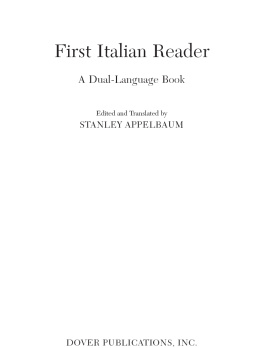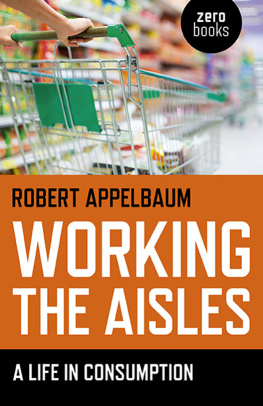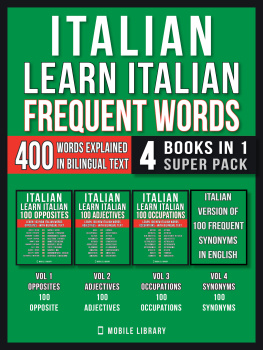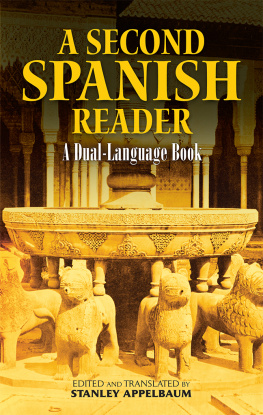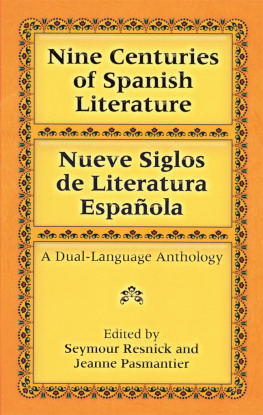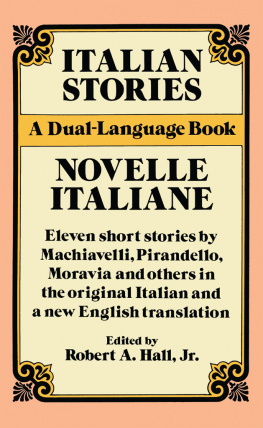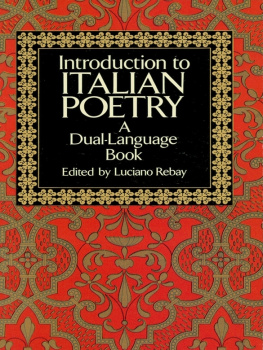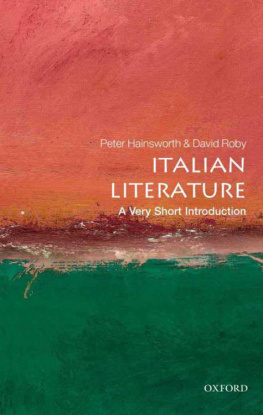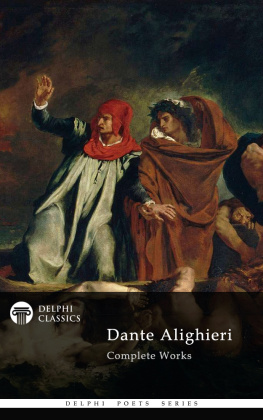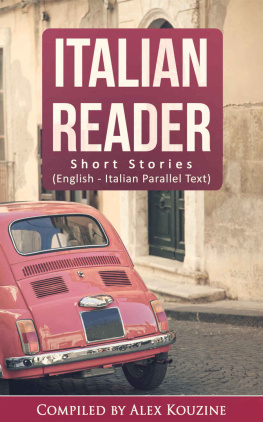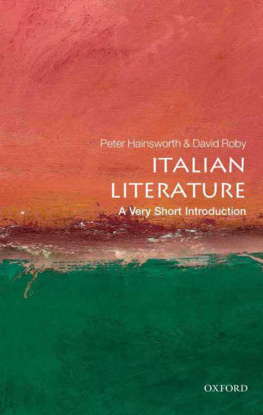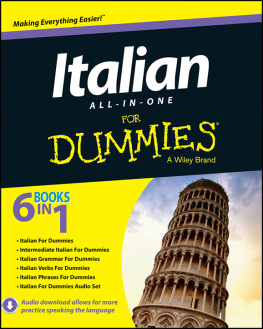First Italian Reader
First Italian Reader
A Dual-Language Book
Edited and Translated by
STANLEY APPELBAUM
DOVER PUBLICATIONS, INC
Mineola, New York
Copyright
Selection, English translations, Preface, and Introduction copyright 2008 by Dover Publications, Inc.
All rights reserved.
Bibliographical Note
This Dover edition, first published in 2008, is a new selection of excerpts from 55 Italian authors (reprinted from standard texts) writing between ca. 1300 and ca. 1920 (the latest original publication date is 1921; see Introduction for data on individual authors), together with new English translations by Stanley Appelbaum, who made the selection and wrote the Preface and Introduction.
Library of Congress Cataloging-in-Publication Data
First Italian reader : a dual-language book / edited and translated by Stanley Appelbaum.
p. cm.
Italian and English.
ISBN-13: 978-0-486-46535-7
ISBN-10: 0-486-46535-7
1. Italian languageReaders. 2. Italian languageTextbooks for foreign speakersEnglish. I. Appelbaum, Stanley.
PC1115.F57 2008
458.2421dc22
2007041872
Manufactured in the United States of America
Dover Publications, Inc., 31 East 2nd Street, Mineola, N.Y. 11501
PREFACE
This is not a book for children or for absolute beginners in Italian: the material is adult (though not in the scabrous sense), and a good grounding in Italian grammar is needed for the fullest enjoyment of the passages in the original. This is a first reader in the sense of an introductory anthology of the whole span of Italian literature from ca. 1300 to ca. 1920. (Drama is excluded at the publishers request, but a few major playwrights are represented by work in other genres.) The excerpts are totally unadulterated, not retold or simplified pabulum. Self-contained, this book can be used with or without an instructor. It should appeal to anyone interested in a rapid survey of a vital, energetic body of writing, and one of the great cultural legacies.
The 55 authors (or works: two are anonymous) include a host of the greatest names in the field, including many of world renown, and three Nobel laureates. The facing English translations, prepared specially for this volume, are complete, and as faithful as the differences between Italian and English allow; they obviate the use of reference books for unfamiliar words and grammatical forms, etc. The average length of the authors contributions is about two pages (per language), but a few poets are given only one-half to one-and-a-half pages, and two or three prose writers are allotted up to three pages (Boccaccio!) to avoid truncating a good story or train of thought.
It would be impossible to compile for such literatures as English, German, and French (for instance) an anthology like this which reaches back into the thirteenth century and can be readily understood; Italian is fortunate in having remained fundamentally stable since then, except for relatively superficial changes. (Of course, this anthology, which has sought to include only very lucid and self-explanatory selections, has avoided the very rich literature in dialect; anyway, lucidity is often more a feature of a given authors style than of his date.) Nevertheless, some readers may wish to begin with the eighteenth- or nineteenth-century material for greater familiarity.
Italian literature has often been highly influential on the rest of Europe (for instance, this reader includes excerpts from three stories that inspired Shakespearean plays); from roughly 1300 to 1600 it often led the way. The present volume is particularly strong on the glorious sixteenth century. It also pays particular attention (in the area of prose) to the magnificent Italian storytelling tradition of the late Middle Ages and Renaissance, and (in the area of verse) to the sonnet, which was a thirteenth-century Italian invention.
The excerpts are chronological by authors years of birth (or, where these are unknown, by the approximate date of the work). They include not only poetry and fiction, but also history, philosophy, and other expository prose; the reader can sample the surprising writing ability of men renowned for other talents, such as Michelangelo and Galileo. There is also much humor and fun, including the world- famous Pinocchio. This book will be welcome to all who have wished for a taste of the original wording of such writers as Dante, Manzoni, and Pirandello; of such works as the Decameron, The Prince, and The Courtier.
To avoid further breaking up of the already choppy pages, no footnotes have been used; thus, it is highly advisable to consult the numbered portions of the Introduction corresponding to the excerpts being read. There is extremely little duplication of material already in previous Dover dual-language books; and even in those few cases, the translations here are new. No attempt has been made to regularize such permissible variations in accenting as /, /, or -io/-o. The excerpts here follow the source texts in each case (this is true of the orthography in general).
INTRODUCTION
Commentary on the Selections
Novellino. Anonymous; written between 1281 and 1300; first published 1525; the most important Italian story collection before Boccaccios Decameron. This collection was dubbed Novellino by Giovanni Della Casa (see No. 23); earlier it had been called Cento novelle antiche (A Hundred Old Stories) or Libro del bel parlar gentile (Book of Comely Gentle Speech). Written by one or more Florentines or northern Italians, it combined entertainment with social wisdom. Its stories are very brief, and are derived from a variety of sources; our selection B is a variation of a tale included in Petroniuss Satyricon; C is obviously from Aesop. All three tales reprinted here are complete, except for their long, summarizing titles.
Dante Alighieri (12651321). Usually considered the greatest Italian author (he also wrote many other verse and prose works in Italian and Latin), Dante, after turbulent civic activities, was in permanent exile from his native city-state Florence when he composed his Commedia (called Divina in a 1555 edition), probably beginning about 1306. Midway through life (that is, at 35, with reference to the biblical life span of 70) he allegorically finds himself in a forest of moral confusion, attacked by wild animals emblematic of his vices, until rescued by the voice of reason in the guise of the great ancient Roman poet Vergil (our selection is the very opening of the Inferno, the first part of the Commedia). The fame of Dante, Petrarca (No. 3), and Boccaccio (No. 4) led to the acceptance of Tuscan as the chief literary dialect (see No. 14) and the basis of standard Italian.
Francesco Petrarca (13041374; often called Petrarch in English). A pioneer of humanism (the revival of Greco-Roman culture), Petrarca wrote voluminously in Italian and Latin, but was most lastingly influential as the perfecter of the sonnet (317 out of the 366 Italian lyric poems in his Canzoniere [Songbook] are sonnets, outstanding for their virtuosity and sincerity; they were published by 1554). The sonnets, five of which are reprinted here, idealize his love for the dead Laura, whom he met in Avignon in 1327. The vanity referred to in selection A is his love for Laura; D was written on Good Friday of 1338; in E, his master is Love. Petrarca has been called Italys greatest lyric stylist and poet.
Giovanni Boccaccio (13131375). A humanist and friend of Petrarca, Boccaccio wrote many Italian and Latin works, but is best known as possibly the greatest storyteller of all time in his hundred-tale
Next page
